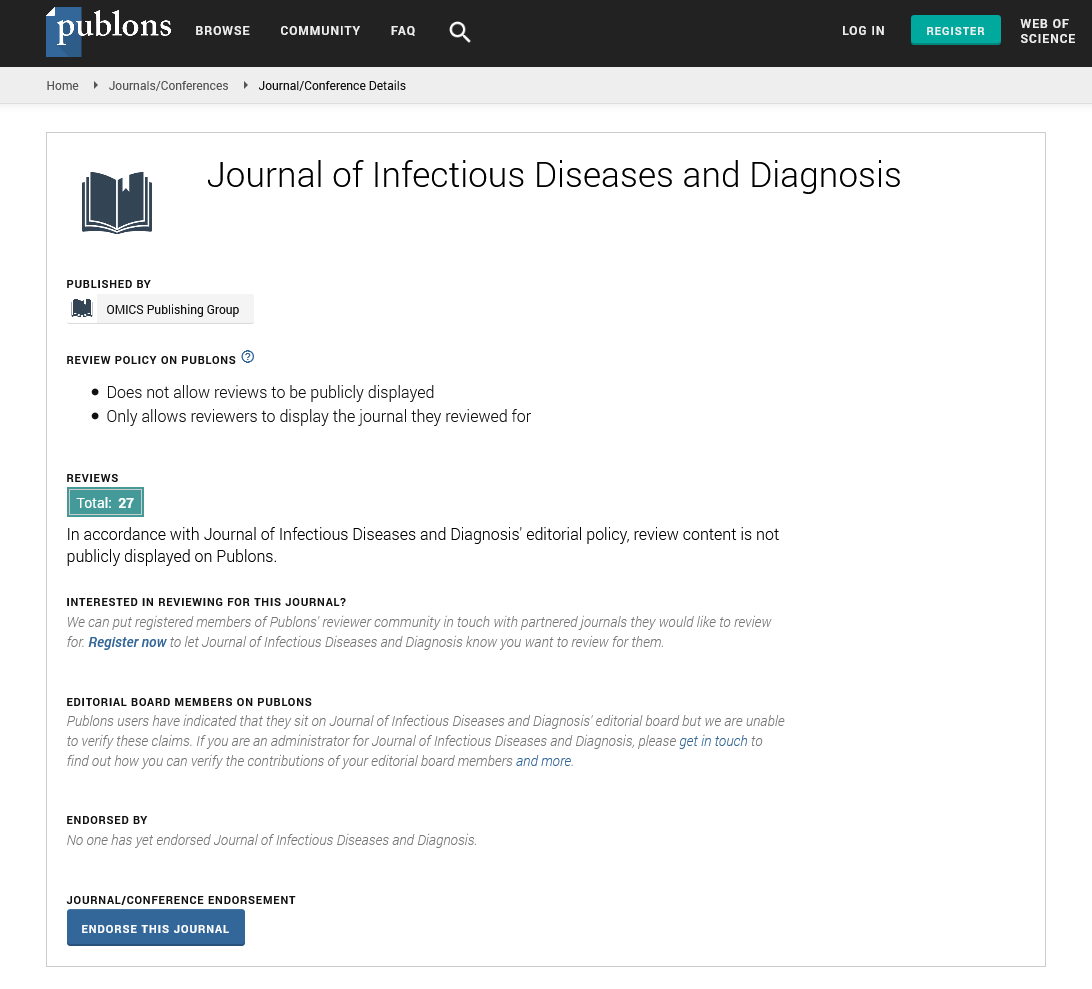Indexed In
- RefSeek
- Hamdard University
- EBSCO A-Z
- Publons
- Euro Pub
- Google Scholar
Useful Links
Share This Page
Journal Flyer

Open Access Journals
- Agri and Aquaculture
- Biochemistry
- Bioinformatics & Systems Biology
- Business & Management
- Chemistry
- Clinical Sciences
- Engineering
- Food & Nutrition
- General Science
- Genetics & Molecular Biology
- Immunology & Microbiology
- Medical Sciences
- Neuroscience & Psychology
- Nursing & Health Care
- Pharmaceutical Sciences
Opinion Article - (2025) Volume 10, Issue 5
Herpes Simplex Virus Infections: Integrating Clinical Assessment, Molecular Diagnostics and Therapeutic Strategies
Laura Stanton*Received: 29-Aug-2025, Manuscript No. JIDD-25-30295; Editor assigned: 01-Sep-2025, Pre QC No. JIDD-25-30295 (PQ); Reviewed: 15-Sep-2025, QC No. JIDD-25-30295; Revised: 22-Sep-2025, Manuscript No. JIDD-25-30295 (R); Published: 30-Sep-2025, DOI: 10.35248/2576-389X.25.10.354
Description
Herpes is a viral infection caused by Herpes Simplex Viruses (HSV), primarily categorized as HSV-1 and HSV-2. These infections can affect the oral or genital regions and while symptoms may be apparent, many individuals experience mild or even no visible signs. Common manifestations include small, painful blisters, itching and redness, often accompanied by flulike symptoms such as fever, swollen lymph nodes and fatigue during initial outbreaks. Recurrences can occur due to viral reactivation, often triggered by stress, illness or other environmental factors.
Diagnosis begins with a thorough clinical evaluation. Healthcare providers examine lesions and review symptom history, including the frequency, location and severity of outbreaks. Although physical assessment is helpful, symptoms alone may not provide a definitive diagnosis. Laboratory testing is generally required to confirm the presence of the virus and differentiate between HSV-1 and HSV-2. Accurate identification is essential to guide treatment, manage symptoms and reduce the risk of transmission.
One of the commonly used laboratory methods detects viral DNA with high sensitivity. This approach can identify HSV even when visible sores are absent, enabling early confirmation and timely medical intervention. This method is particularly useful in detecting viral shedding in asymptomatic individuals, which plays a significant role in the transmission of infection. PCR results are often available within a few hours to a couple of days, depending on laboratory facilities, offering a more rapid alternative to traditional techniques.
Viral culture is another diagnostic approach. Samples collected from lesions are incubated under controlled conditions to allow virus replication. Cultures can provide information about the viral strain and help determine susceptibility to antiviral therapy. While highly specific, viral culture may be less sensitive than molecular methods, especially in recurrent infections or when lesions have begun to heal. Timing of sample collection is critical, as older or healing lesions may yield negative results despite active infection.
Serological tests are used to detect antibodies produced in response to HSV infection. These tests can differentiate between HSV-1 and HSV-2 and indicate past exposure, even in individuals who have never experienced noticeable symptoms. Serology is particularly valuable for identifying asymptomatic carriers, assessing immunity and evaluating potential risk of transmission to partners or neonates. It is important to note that antibody development may take several weeks after initial infection, so early testing may produce false-negative results.
Effective diagnosis also includes consideration of patient history and risk factors. Factors such as sexual activity, previous infections and immune system status influence both susceptibility and clinical presentation. In addition, accurate communication between patients and healthcare providers is essential to ensure appropriate sample collection, testing and follow-up. Patients should report any recurrence of symptoms promptly to allow monitoring of disease progression and response to therapy.
Management of herpes infections is guided by accurate diagnosis. Antiviral medications, such as acyclovir, valacyclovir and famciclovir, help reduce the severity and duration of outbreaks. They can also decrease the frequency of recurrent episodes and reduce the risk of transmission to others. In certain cases, suppressive therapy may be recommended for individuals with frequent recurrences, offering continuous control of viral activity. Alongside medication, lifestyle measures including stress management, adequate rest and careful hygiene contribute to overall disease control.
Public health considerations are an important aspect of herpes management. Early and accurate diagnosis can help prevent spread within communities, particularly in populations at higher risk, such as sexually active adults or immunocompromised individuals. Education regarding safe practices, regular testing and disclosure to sexual partners are integral to controlling transmission. Additionally, research into improved diagnostic tools and therapies continues to expand available options for both healthcare providers and patients.
Challenges in diagnosis remain due to the variability of symptoms and the presence of asymptomatic carriers. Individuals with mild or atypical signs may not seek medical attention, contributing to unrecognized transmission. Laboratory access, cost and timing of testing can also impact detection, emphasizing the importance of combined clinical assessment and laboratory evaluation. Continuous monitoring, patient education and awareness of early signs improve outcomes and reduce the burden of infection.
In conclusion, herpes infections require careful evaluation for accurate diagnosis and effective management. Clinical assessment, supported by laboratory techniques including PCR, viral culture, serology and rapid antigen detection, provides a comprehensive approach to identifying the virus. Early recognition, appropriate antiviral therapy and preventive strategies are essential to controlling symptoms and minimizing transmission. Accurate diagnosis empowers both patients and healthcare providers to make informed decisions, maintain health and reduce the impact of this viral infection on communities.
Citation: Stanton L (2025). Herpes Simplex Virus Infections: Integrating Clinical Assessment, Molecular Diagnostics and Therapeutic Strategies. J Infect Dis Diagn. 10:354.
Copyright: © 2025 Stanton L. This is an open-access article distributed under the terms of the Creative Commons Attribution License, which permits unrestricted use, distribution and reproduction in any medium, provided the original author and source are credited.

